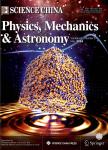Thermal energy dependent transient permittivity of epsilon-near-zero material
Thermal energy dependent transient permittivity of epsilon-near-zero material作者机构:MOE Key Laboratory of Material Physics and Chemistry under Extraordinary Conditionsand Shaanxi Key Laboratory of Optical Information TechnologySchool of Physical Science and TechnologyNorthwestern Polytechnical UniversityXi’an710129China Department of Materials Science and EngineeringSouthern University of Science and TechnologyShenzhen518055China Shenzhen Institute for Quantum Science and EngineeringSouthern University of Science and TechnologyShenzhen518055China Department of Electrical and Computer EngineeringNational University of SingaporeSingapore117583Singapore LEES ProgramSingapore-MIT Alliance for Research&Technology(SMART)Singapore138602Singapore
出 版 物:《Science China(Physics,Mechanics & Astronomy)》 (中国科学:物理学、力学、天文学(英文版))
年 卷 期:2022年第65卷第8期
页 面:96-101页
核心收录:
学科分类:070207[理学-光学] 07[理学] 08[工学] 0804[工学-仪器科学与技术] 080501[工学-材料物理与化学] 0805[工学-材料科学与工程(可授工学、理学学位)] 0703[理学-化学] 0803[工学-光学工程] 0702[理学-物理学]
基 金:supported by the National Natural Science Foundation of China(Grant Nos.91950207 12174310 61805157 and 11974282)
主 题:epsilon-near-zero optical nonlinearity transient response thermal energy hot electron indium tin oxide
摘 要:Transparent conductive oxides exhibit attractive optical nonlinearity with ultrafast response and giant refractive index change near the epsilon-near-zero(ENZ) wavelength, originating from the intraband dynamics of conduction electrons. The optical nonlinearity of ENZ materials has been explained by using the overall-effective-mass and the overall-scattering-time of electrons in the extended Drude model. However, their response to optical excitation is yet the last building block to complete the theory. In this paper, the concept of thermal energy is theoretically proposed to account for the total energy of conduction electrons exceeding their thermal equilibrium value. The time-varying thermal energy is adopted to describe the transient optical response of indium-tin-oxide(ITO), a typical ENZ material. A spectrally-resolved femtosecond pump-probe experiment was conducted to verify our theory. By correlating the thermal energy with the pumping density, both the giant change and the transient response of the permittivity of ITO can be predicted. The results in this work provide a new methodology to describe the transient permittivities of ENZ materials, which will benefit the design of ENZ-based nonlinear photonic devices.



